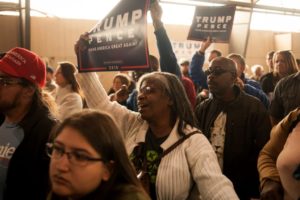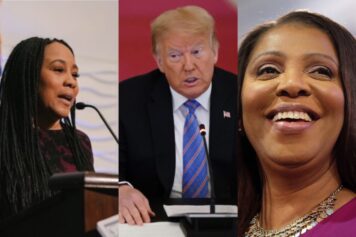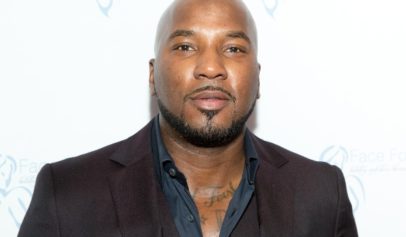
President Donald Trump has proposed a number of policies that would hurt low-income Americans, who are disproportionately Black.
(Photo by Theo Stroomer /Getty Images)
Black Americans already tend to lag behind whites economically, and a new report shows their prospects are bound to get worse under President Donald Trump.
The National Urban League published its State of Black America report Tuesday, May 2, an annual report examining racial equality in America along the lines of economics, education, employment and civic engagement, among other things. The recent shift in power over in Washington, however, has left many Black leaders worried that any progress made toward reaching racial equality is now in danger of being lost.
“The social cancer of hate continues to metastasize, thriving in a climate conducive to hostility towards religious and racial minorities, permeating even at the highest levels of national discourse and threatening to further crack our fractured nation,” said Marc Morial, president and chief executive of the National Urban League. “Incendiary language about immigrants, Muslims, women and people of color has translated into discriminatory public policy.
“On this, the National Urban League is resolute; we will protect our progress.”
The league’s annual report revealed that Black Americans are getting just 72 percent of the American pie compared to whites. For Hispanics, the standard of living is 78 percent that of average white Americans.
This measurement, known as the “equality index,” is used to summarize how well Blacks and Latinos are doing compared to their white counterparts. The index hasn’t improved much for either group, but its various components — economics, health, education, civic engagement and social justice — have fluctuated.
This year, Blacks saw the largest increase in area of education (from 77.4 percent to 78.2 percent) with smaller increases in health and economics. The report indicated no change in the civic engagement index but showed a sharp decline in social justice, falling from 60.9 percent to 57.4 percent.
“The increase in the Black-white education index was the result of a large decline in the share of African-American students who have teachers with less than three years of experience, a higher percentage of African-Americans between the ages of 18 and 24 gaining associate’s degrees and increased home literacy activities for African-American children,” the report read. “The education index also received a positive boost from a notable decline in high school dropout rates among all students, including African-Americans.”
The report attributed rises in both health and economics to greater equality of outcomes for Blacks and whites as it relates to Medicare expenditures and continued improvements in the Black unemployment rate. Meanwhile, the social justice index took a mighty blow as the result of a change in the way the Bureau of Justice Statistics records data on traffic stops and declines in index values for high school teens caught carrying weapons on school grounds.
Though President Trump has tried to woo African-Americans with his 10-point urban renewal plan and his “New Deal for Black America,” Black leaders say they can see right through his thinly veiled promises. Trump touted plans to restore the civil rights of Black Americans by protecting them from illegal immigrants, vowing to reinvest into the inner cities with the money saved from barring Muslims from entering the U.S.
“He is intentionally trying to drive a wedge between two populations that are both in need,” Rep. Karen Bass (D-Calif.) told The Washington Post in an interview.
The league’s report also examined economic inequalities across the country, showing some cities with wider income and unemployment gaps than others. For one, Milwaukee was the least equal metropolitan area for Blacks for the second year in a row, touting a Black unemployment rate of 14 percent. For whites, it was just 3 percent.
Other Midwestern cities like Toledo, Cleveland and Detroit also had stark racial disparities in their unemployment rates. On the flip side, San Antonio boasted the narrowest Black-white unemployment gap.
Unemployment woes stand to get worse, however, as the Trump administration has proposed plans to cut former President Barack Obama’s Labor Department initiatives. The budgets for federal agencies tasked with overseeing health and housing programs for low-income Americans (who are disproportionately Black) also are bound to be slashed under the direction of Trump.
“Given what we’ve seen so far in terms of the kinds of policies that are being set forth by this administration, I don’t sense that there will be great gains on narrowing these gaps, and in some cases, they could widen,” said Valerie Rawlston Wilson, director of the Economic Policy Institute’s Program on Race, Ethnicity and the Economy.


